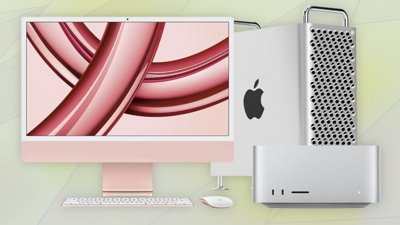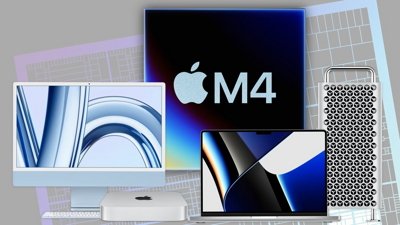The Mac Pro with M2 Ultra is the last of Apple's computers to shift from Intel to Apple Silicon. The casing remains identical to the 2019 tower with multitudes fewer configuration options.
The lack of configuration options boils down to Apple Silicon. Intel had multiple chipsets and graphics cards to choose from that could bring the overall cost to over $50,000.
The M2 Ultra is the only option available, so users only need to choose their RAM and storage. Adding PCI-E cards can quickly multiply the cost of this pro machine.
Users hope that a future Mac Pro will ship with PCI-E GPU compatibility or at least some kind of Apple solution for increasing graphics potential. Since that doesn't exist today, the machine is meant for a very different market than when it offered Intel.
The 14-inch MacBook Pro and 16-inch MacBook Pro with M3 Max chipsets are able to compete with the Mac Pro's performance. Rumors suggest the M3 Ultra in the Mac Pro will be an incredible chipset, though it will likely still have the same limitations as the current model.
Since Apple released the M4 processor in May 2024 for the iPad Pro lineup, it seemed there would never be an M3 Ultra. A new Mac Pro was rumored for WWDC 2024, but it wasn't updated.
After MacBook Pro models were updated with M4, M4 Pro, and M4 Max, it became clear that M3 Ultra wasn't going to happen. Rumors suggest Mac Pro and Mac Studio will be updated in summer 2025.
Mac Pro with Apple Silicon features
The updated Mac Pro is almost physically indistinguishable from its Intel predecessor. The extra Thunderbolt ports give it away.
The feature set of this machine is on par with Mac Studio for the most part. The expansion opportunities are what separate this Mac and adds $5,000.
Mac Pro Design
Unlike other desktop Macs, the Mac Pro enclosure is built to be out in front. It has a striking lattice pattern across the front and back, all encased in bright aluminum.
The rear of the case has a black cutout filled with ports. The top has a power button, two more Thunderbolt ports, handles, and the disconnect for removing the outer case.
Mac Pro is 20.8 inches tall, 17.7 inches long, and 8.58 inches wide. It has lost some weight since its first iteration, now tipping the scales at a lighter but still significant 37.2 pounds.
Rack-mounted models have a slightly different external case that lacks the lattice structure on the rear. Users can choose between feet and wheels in the standard tower model.
Slide the cover off to see a clean internal space with no visible wires. The Apple Mac Pro insignia covers a space where the M2 Ultra chipset resides.
Most of the internal space is empty. Six PCI-E slots are visible for user-added expansion cards.
Mac Pro PCI-E slots
Apple built M2 Ultra to be compatible with PCI-E expansion. That's the only reason this tower has returned to a world where Mac Studio exists.
There are seven PCI-E slots, but an Apple I/O card occupies one in an x4 gen 3 slot. The open slots include four PCI-E x8 gen 4 slots and two PCI-E x16 gen 4 slots.
There is up to 300W of auxiliary power available. Two six-pin connectors deliver 75W each, and one 8-pin delivers 150W.
Gen 4 provides twice the bandwidth of gen 3, which was used in the Intel-based Mac Pro. Audio, storage, networking, and other types of cards are supported.
There is one glaring omission in PCI-E support — graphics. Users can not add graphics cards to boost gaming, rendering, and other processes already covered by M2 Ultra's GPU.
Apple's executives addressed this in multiple interviews. It is a technological problem the company hasn't been able to overcome, and M2 Ultra is seen as enough for most.
The few that need non-graphics PCI-E expansion welcome the Apple Silicon Mac Pro. There is a significant difference between using a tower with integrated slots versus a Thunderbolt-connected set of expansion slots.
For now, those seeking to load their computers with multiple graphics cards will have to look outside of Apple. While M2 Ultra and this Mac do not support adding PCI-E graphic cards, a future model could.
That said, this means the addressable market for Mac Pro is much smaller for the Apple Silicon generation versus the previous Intel model. Apple no longer offers the Intel model, so users must look to Windows.
Mac Pro Ports
The Mac Pro has eight Thunderbolt 4 ports, three USB-A ports, two HDMI ports, a 3.5mm headphone jack, two 10Gbps Ethernet ports, and two SATA ports.
The SATA ports and a single USB-A port are inside the case. All other ports are within easy reach outside the case.
The HDMI ports support up to 8K monitors and refresh rates up to 240Hz. Connect up to eight displays up to 4K resolution thanks to plenty of Thunderbolt ports in addition to HDMI.
Six displays with up to 6K can be connected. That means six Pro Display XDR can be connected in tandem.
Three displays with up to 8K resolution at 60Hz are supported too. DisplayPort output over USB-C is also an option.
Mac Pro with M2 Ultra
Apple's M2 Ultra combines two M2 Max into one unified chipset — similar to how M1 Ultra was created. That means it has a 24-core CPU and a 60-core GPU that is configurable to 76 cores.
Since it is Apple Silicon, it has unified memory that supports up to 192GB. The Media Engine is the equivalent of seven Afterburner cards.
These specs, plus a Neural Engine, place the Mac Pro with M2 Ultra in an entirely different computational dimension. Sure, users can't add graphics cards, but the power provided by M2 Ultra should mean fewer users would need that option.
Apple provided some specs comparing the Apple Silicon Mac Pro to its Intel predecessor. These are impressive specs, but Apple chose the ones that stand out most.
The following compare Mac Pro with a 76-core GPU M2 Ultra and an Intel model configured with a 28-core Xeon W and Radeon Pro W6900X.
- 3D rendering is 2.7x faster in OTOY Octane X.
- Video processing has 2.4x faster video upscaling in Topaz Video AI.
- Editing 8K video in Final Cut Pro is 3x faster.
- Scientific computing with computational fluid dynamics in NASA TetrUSS is faster by 1.8x.
- Photoshop filter and function performance is improved by 3x.
Testing over time will reveal exactly where this model is lacking compared to Intel. No matter how powerful a chipset is, you can't compete with multiple graphics cards that can be upgraded on demand.
The future of Mac Pro
It isn't clear exactly what Apple has planned for the Mac Pro. Configuring Apple Silicon to work with PCI-E wasn't an accident, nor was it simple.
The time, money, and effort sunk into this machine suggest it's here to stay. However, it serves a slightly smaller market than the Intel model.
While Mac Studio is the pro Mac for most, there's still that tiny percent of a percent that needs the full tower and PCI-E. Apple built the 2019 Mac Pro for 1% of its user base, so serving a small audience isn't something Apple is allergic to.
We expect the high entry price, despite offering little more than a Mac Studio that's $4,000 cheaper, exists to ward off those who don't need this machine. The high price is negligible to companies spending multiples more on expansion cards.
Apple hasn't outright said that graphics expansion is impossible or will not happen. A future model could work with Nvidia cards, like M3 or M4.
More likely, we expect, Apple could develop its own expansion cards with custom Apple Silicon graphics. There is some demand for such a product, but Apple would be committing years of research and money to serve an ever-shrinking market.
For now, the extremely niche use cases covered by the Mac Pro will have to suffice until breakthroughs can be made with Apple Silicon.
Pro Display XDR
Apple updated the Mac Pro with Apple Silicon, but it still offers the same Pro Display XDR as before. It's a 32-inch 6K Retina display with up to 1600 nits of brightness.
The Pro Display XDR is meant to act as an alternative to more expensive reference monitors. Customers can choose between a standard and a nano-texture display.
Since the Pro Display XDR was introduced prior to Apple's silicon revolution, it doesn't have a custom processor beyond the timing controller. Apple must not be ready to add an A13 or better to the high-end monitor yet, but may soon in order to follow the Studio Display's design.
The Pro Display XDR is priced at $4,999 with a standard display or at $5,999 with nano-texture. That's a big jump from Studio Display's $1,599 price point.
Mac Pro price guide
This is the easiest to configure Mac Pro in the history of the high-end desktop—no need to stress over processors, clock speed, or other chipset marketing ploys.
Every Mac Pro comes with the M2 Ultra, but customers can bump from a 60-core GPU to a 76-core GPU for an additional $1,000. Choose from 64GB, 128GB, and 192GB of RAM and up to 8TB of storage.
Get the tower with feet, wheels, or even rack mounted. Wheels add $400, while rack mounting is a $500 premium.
The base model is $6,999 and can be configured up to $12,199 when fully specced out. Adding PCI-E cards will add to the price, but those must be purchased separately.
Mac Pro with Intel
Everything below this point was written about the Intel-based Mac Pro released in 2019. This model is no longer for sale.
Information relating to prices, parts, and comparisons will likely be out of date. The information is preserved as-is for historical purposes for now.
This section may be renovated in the future.
Starting from $5,999, the baseline Mac Pro is equipped with an eight-core 3.5GHz Intel Xeon W with 16 threads, a Turbo Boost clock of up to 4GHz, and 24.5MB of cache. Other processor options include a 3.33GHz 12-core, 24-thread Xeon W with 31.25MB of cache, a 16-core 3.2Ghz version with 32 threads, and a 24-core 2.7Ghz chip with 48 threads and 57MB of cache.
At the top end is a 28-core Intel Xeon W clocked at 2.5Ghz, 4.4Ghz when boosted. Supporting 2933Mz memory, it offers 56 threads and 66.5MB of cache.
The 12 user-accessible DIMM slots are configurable with up to 1.5TB of memory, though the 24-core or 28-core processors are required to use the full amount. Given the known performance of the processor, it is theorized the Mac Pro will be able to support up to 2 terabytes in the 28-core version, based on the number of slots available.
Apple added user-installable SSD upgrade kits for the Mac Pro to its store on June 15.
Intel Mac Pro Design and Technology
Processors
According to Apple, there are five different processors that the Mac Pro will use, all within Intel's Xeon W chip family.
The base model will use an 8-core 3.5GHz Xeon W-3223 processor that can reach 4GHz under Turbo Boost, is equipped with 24.5MB of cache, and supports up to 1TB of 2666MHz memory.
The 12-core Xeon W-3235 is clocked at 3.3GHz, up to 4.4GHz when boosted, and has 31.25MB of cache. While it also supports up to 1TB of memory, it is capable of handling 2933MHz memory, improving its performance.
In the middle of the range is the 16-core 3.2GHz Xeon W-3245 capable of 4.4Ghz under Turbo Boost. Equipped with 38MB of cache, it also includes support for 1TB of 2933MHz memory.
Reaching the higher end, the 24-core 2.7GHz Xeon W-3265M can reach a maximum clock speed of 4.4GHz under Turbo Boost and has 57MB of cache. Unlike the lower-core count chips, the 24-core model can handle up to 2TB of 2933MHz memory, though Apple rates the Mac Pro to handle 1.5TB at this time.
Lastly, the high-end 28-core Xeon W-3275M is clocked at 2.5GHz, Turbo Boosts to 4.4Ghz, and has 66.5MB of cache, with the same memory capacity as the 24-core model.
While Intel's Ark lists the cache of each processor as a lower value, it is the L3 cache included in each chip. Apple's cache values are based on a combination of L3 cache and L2 cache, which can confuse those looking more closely at the hardware.
Does the Mac Pro have a soldered or slotted CPU?
The modular nature of the Mac Pro has also led to another design change for Apple, namely the use of a slotted processor.
Apple tends to solder the processor to the board directly, rather than using any sort of holstering system, as a means to prevent processor changes after purchase, as well as potentially saving space by not needing the slotting mechanism. This is especially evident in the MacBook product lines, which rely on saving as much space and weight as possible.
By using a slotted processor, this means the Xeon W can be removed and replaced by another chip. For companies, this basically makes the processor a repairable component that can be switched out for minimal downtime, rather than leaving the Mac Pro unusable and unproductive for extended periods while it goes off to be serviced by Apple itself.
Apple will likely not offer this as a service, as it has not offered an upgrade similar in over two decades. The Mac Pro 1,1 through 6,1 all had slotted processors, and Apple left upgrading the processors to users.
Where are the RAM slots on the Mac Pro?
Apple's design for the Mac Pro may at first glance seem similar to that of a typical PC, with items slotting into the motherboard, but in this case, Apple is connecting a lot more components to the board than could fit onto one side. Apple's answer to that is to put some of the components on the backside of the motherboard, separate from the rest of the hardware.
A byproduct of the splitting of components is that there's also a segmentation of the cooling used. While the large fans can waft air through the main compartment, a separate blower can push air through the more confined area to cool the RAM and storage, allowing them to operate at potentially higher temperatures than the other components.
Graphics and Expansion
How do PCI-E cards get power?
The Mac Pro includes a total of eight PCI Express expansion slots, which can be used in a variety of different ways. Along with a half-length x4 PCI Express slot with Apple's I/O card installed, one x6 slot, and two x8 slots, there is also space for two MPX bays which can provide either be used with two MPX Modules for graphics or as two pairs of a double-wide x16 and x8 slots.
Generally, the power for a card in a PCI Express slot either stems from the slot itself or can be provided from the power supply as a separate PCI-E connector with a 6 or 8-plug power header.
On to the MPX bays, each of the modules can take up to 500 Watts of power. Apple's explanation is that the PCI Express x16 slot offers up to 75 Watts of power on its own, while the extra PCIe slot has an additional connector that delivers up to 475 Watts on its own, not dissimilar to what Apple did with ADC video cards back in the G4 and G5 tower days.
There are power headers for each PCI-E slot for conventional six- or eight-pin power cabling. Labeled from one to eight, these are used to attach cables with the power header, a potentially more elegant solution than to have cables traipsing through the case from the power supply.
Why are the MPX Modules so big?
In the MPX Module, Apple has elected to create a very large and boxy casing for the graphics card. The extra size enables Apple to create a heat sink that runs almost the full length of the inside of the Mac Pro, giving considerable amounts of metal surface area for heat dissipation to occur with slower fan speeds.
Add in that the full-length card can effectively channel its own private air supply from the case's front fans and pipe the air through to the exhaust at the back without coming into contact with other hardware, and it becomes an ideal cooling system that doesn't require a separate fan for the graphics card.
Do you need to use MPX for a GPU?
No. While Apple's presentation emphasizes the graphics processing of MPX modules, there is nothing stopping the use of other graphics solutions in the Mac Pro. The use of standard PCIe 3.0 connections as well as the ability to connect supplemental power via provided nearby headers means normal graphics cards could easily be used in the system.
Of course, the MPX Module method offers silent cooling, something not typically offered by off-the-shelf graphics cards equipped with their own fans. Opting for MPX cards may be quieter in general to use.
As Apple doesn't include Nvidia drivers in macOS, this does effectively limit the range of graphics cards that work to those produced by AMD. It could also be feasible to take advantage of Thunderbolt 3 to use an eGPU enclosure, though there is no real benefit to doing so since cards can be installed.
What graphics options does the Mac Pro have?
The base offering is the AMD Radeon Pro 580X, which has 36 compute units, 2,304 stream processors, 8GB of GDDR5 memory, and offers up to 5.6 teraflops of single-precision performance. This option uses only a half-height MPX Module, enabling the second PCIe slot used in full-height modules to be available for extra expansion if required.
At the higher end is the AMD Radeon Pro Vega II, which has 64 compute units, 4,096 stream processors, 32GB of HBM2 memory, and 14.1 teraflops of single-precision performance.
An alternative option is the Radeon Pro Vega II Duo, which has two Vega II GPUs working together on the same card. This gives the Mac Pro 128 compute units, 8,192 stream processors, 64GB of HBM2 memory, and a single-precision floating-point performance of up to 28.3 teraflops.
As there is space for two MPX Modules in the Mac Pro, there is the extremely high-end option to have two of the Radeon Vega II Duo modules installed, providing four GPUs. As there are also standard PCIe slots available, it also means off-the-shelf graphics cards could be used, though Nvidia cards are not supported in macOS at this time.
Why does the Mac Pro have PCI-E 3.0 instead of PCI-E 4.0?
According to Apple's technical specifications for the Mac Pro, it includes eight PCI Express expansion slots, but all are described as being "gen 3," otherwise known as PCIe 3.0. The connection has been a widely-used industry standard for years, and the addition to the Mac Pro isn't entirely surprising.
So far, there are no Xeon processors that support PCI-E 4.0 or the even newer 5.0 expected until the first half of 2020, far too late for inclusion in the fall Mac Pro release.
Given the time it takes to design a new system and upgrades, Apple may even want to wait until 2021 before it makes any PCIe changes. "Sapphire Rapids" follows Ice Lake and is tipped to include support for PCIe 5.0, which could be a much better prospect for a performance-focused Mac.
Internal Cooling
As part of the design of the Mac Pro's enclosure, Apple created air inlets and outlets to provide as much airflow as possible while simultaneously keeping the casing as rigid as possible. While typical case producers would use holes stamped out of sheet metal, Apple went for a different approach.
Citing that it is based on a "naturally occurring phenomenon in molecular crystal structures," Apple says that the pattern is made up of hemispheric divots drilled into each side of the panel. Drilled at an offset, the majority of the hemispheres intrude into space cut away by three hemispheres from the opposing side, creating the pattern of holes.
The result is an enclosure that has an extremely large surface area for airflow, more than that of the original Mac Pro. This allows vast amounts of air to pass through with a more laminar flow to the inlet of the fans than thousands of smaller holes and maintains the structural rigidity of the enclosure at the same time.
It also helps considerably lighten the case as well, since the lattice creates areas that are made up of "more air than metal," as Apple puts it. This and the weight reduction is why the same technique is used on the back of the Pro Display XDR.
How do you open up the Mac Pro?
On the top of the housing, in between the frame's handles, is a large latch. This semi-circular handle can be lifted and twisted a quarter-turn between two positions, marked on the top of the case and within the latch cavity.
Once twisted to the unlocked position, the latch handle can be used to lift the entire external casing up and off the Mac Pro.
Replacing the enclosure is simple, consisting of lowering it around the Mac Pro, then twisting the latch a quarter turn to its original position.
Afterburner
Afterburner is a card for the Mac Pro that is designed for use in video production. Rather than relying on the processor or graphics cards for some tasks, the Afterburner takes over for some tasks, specifically those relating to video processing between formats, freeing up the rest of the system components to perform other tasks.
When fitted into a Mac Pro's PCI Express x16 slot, video editors will be able to manage high-resolution, high-bitrate videos with ease, without any of the stuttering or waiting that could occur in less-powerful systems. The smoother the workflow, the easier for the editor to work, and the faster they can complete the video project.
On a more technical level, the Afterburner is a card with what Apple refers to as a Field Programmable Gate Array (FPGA) or a programmable Application-Specific Integrated Circuit (ASIC). This effectively means it is a card that has chips created for a specific task rather than a general-usage chip.
While graphics cards offer the ability to perform computing tasks, they are still using chips that are "general" in usage, albeit within the field of graphics. They can be used for a variety of tasks, which makes them flexible but not necessarily able to offer optimal performance compared with a made-for-purpose chip.
The card is built to accelerate ProRes and ProRes RAW codecs, namely the encoding and decoding of the codecs, which is a processing-heavy task in most cases. Apple claims the card is capable of handling up to six streams of 8K ProRes RAW video simultaneously at 30 frames per second, making it extremely useful for video editors working at the highest possible level.
It can work on up to 23 streams of 4K ProRes RAW video at 30 frames per second, or at 4K ProRes 422, up to 16 video streams on less demanding video specifications.
In terms of compatibility, Apple advises it will work with ProRes and ProRes RAW codecs in Final Cut Pro X, QuickTime Player X, and "supported third-party apps," though, at this time, it is unclear what these will be.
The T2 processor
The Apple T2 Security Chip is a separate processor that sits between your Mac's Intel processor and macOS for some aspects of operation.
It sits there to ensure, first of all, that nothing can ever get loaded onto your machine without you explicitly want it to. The T2 chip provides a secure boot, which means that the only things that can run at startup are trusted, approved macOS software.
This prevents malware from getting its hooks into your Mac when it starts up, and the T2 chip also takes care of security once it's running. For instance, built into it is a dedicated Advanced Encryption Standard (AES) hardware engine. This makes sure the data on your storage drives is encrypted, and because it's done in hardware, there's no hit to the speed of your Mac as macOS reads and writes data.
The T2 chip includes an audio processor that is meant to contribute to overall superior sound quality compared to Macs without it. In practice, though, musicians have reported problems.
What Apple does not mention in its official T2 security documentation is that video encoding is also faster with T2.
In trying to document it precisely, we found there were multiple factors, and what you saw depended on what video software you were using.
However, the difference could be in the order of many minutes for the Mac Pro. Using the right settings, a T2-enabled Mac will typically encode video significantly faster than a machine without the T2.
macOS Sequoia
Announced at WWDC 2024, macOS Sequoia brings a number of new features to Apple computers. The Mac Pro will be elligible for macOS Sequoia when it releases in the fall. Here are some of the notable updates Mac owners can expect.
Improved Window Tiling
An improvement has been made to the existing window management features. The window tiling now works similarly to some third-party management apps.
You can drag a window to a spot on the screen, and it will automatically reposition itself. For example, placing it on the far edge of a screen can cause it to expand and fill the left half of your display.
Messages
Users can now add different effects to the text they send to others, such as bold, italics, and underlining. Also, in Messages, users can schedule messages to be sent to contacts at specific times, which is handy for sending out important news, reminders, and time-specific information.
Additionally, Tapbacks will have the option to react to messages with emoji.
Dedicated Passwords app
After incorporating passwords as part of the Keychain integrated into its operating systems, Apple has finally made an app for it. The new Passwords app is used to manage user authentication across Apple's ecosystem of devices.
The macOS version is the only one that can import password lists.
Safari
A new summarization feature, dubbed Highlights, provides users with a short summary paragraph that is contextually generated based on the webpage they are looking at. This can include details about locations when planning a trip, information about a TV show or movie, and even quick links to other resources.
A new version of Reader mode has been redesigned with new elements, including a table of contents and a summary of the article.
Apple Intelligence
Apple Intelligence is Apple's attempt to integrate artificial intelligence into its products. As Apple prioritizes security, much of the Apple Intelligence processes occur on the device itself.
Furthermore, Apple describes Apple Intelligence as "personal intelligence," focusing on enhancing how users interact with the apps and services they already use instead of concentrating on novel use cases.
Apple Intelligence is limited to M-series Macs and iPads, as well as iPhones running the A17 Pro chip and newer. Since Mac Pro runs an M-series chip, it is compatible.
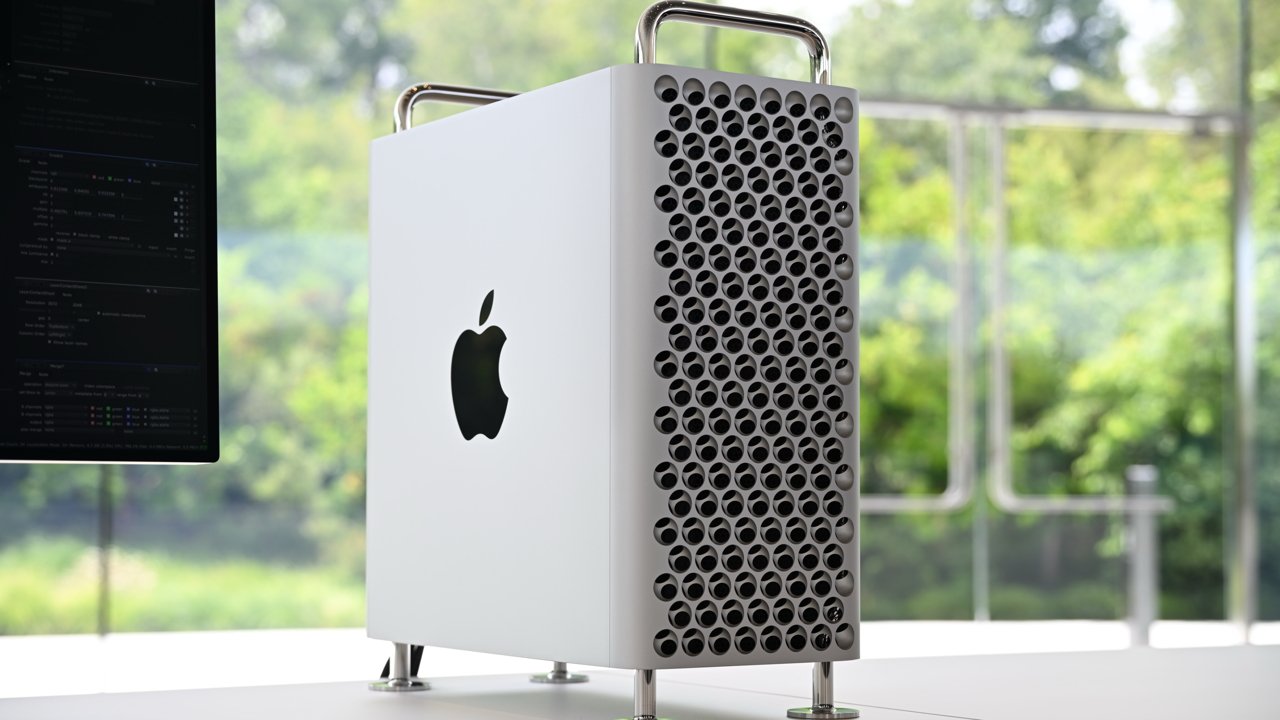
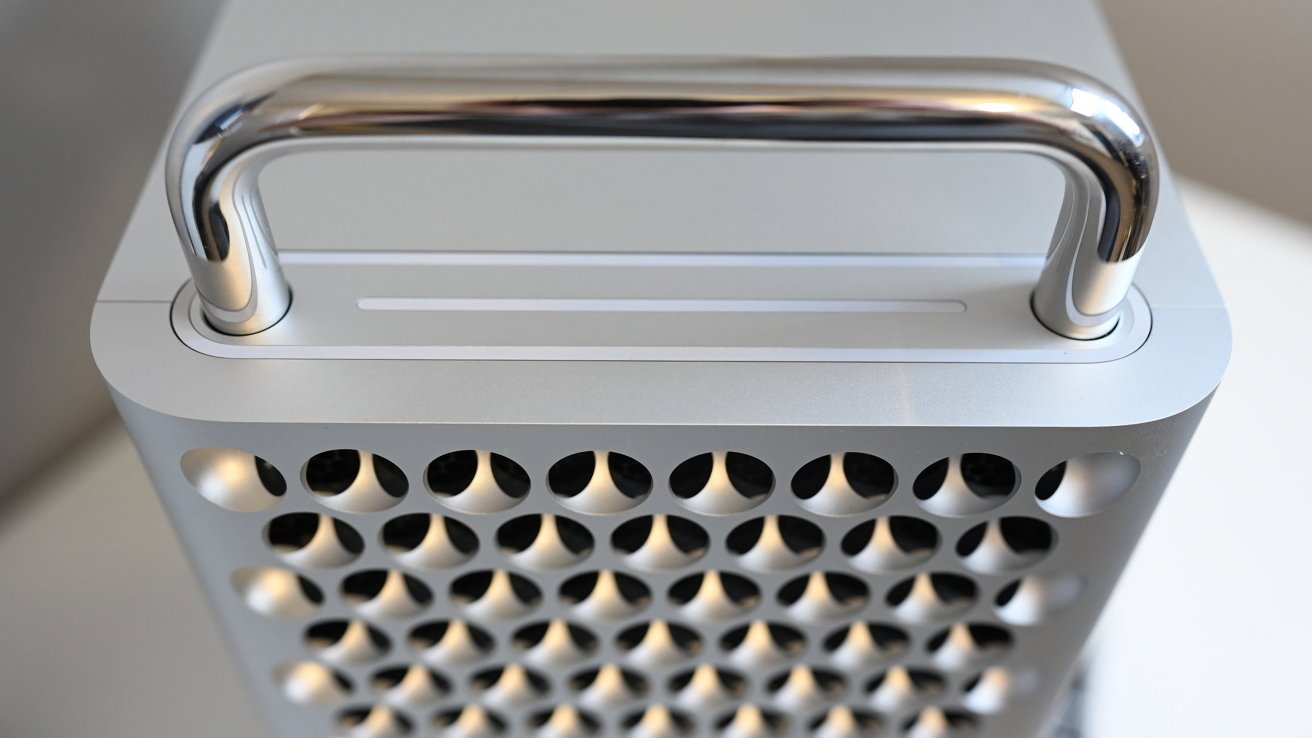
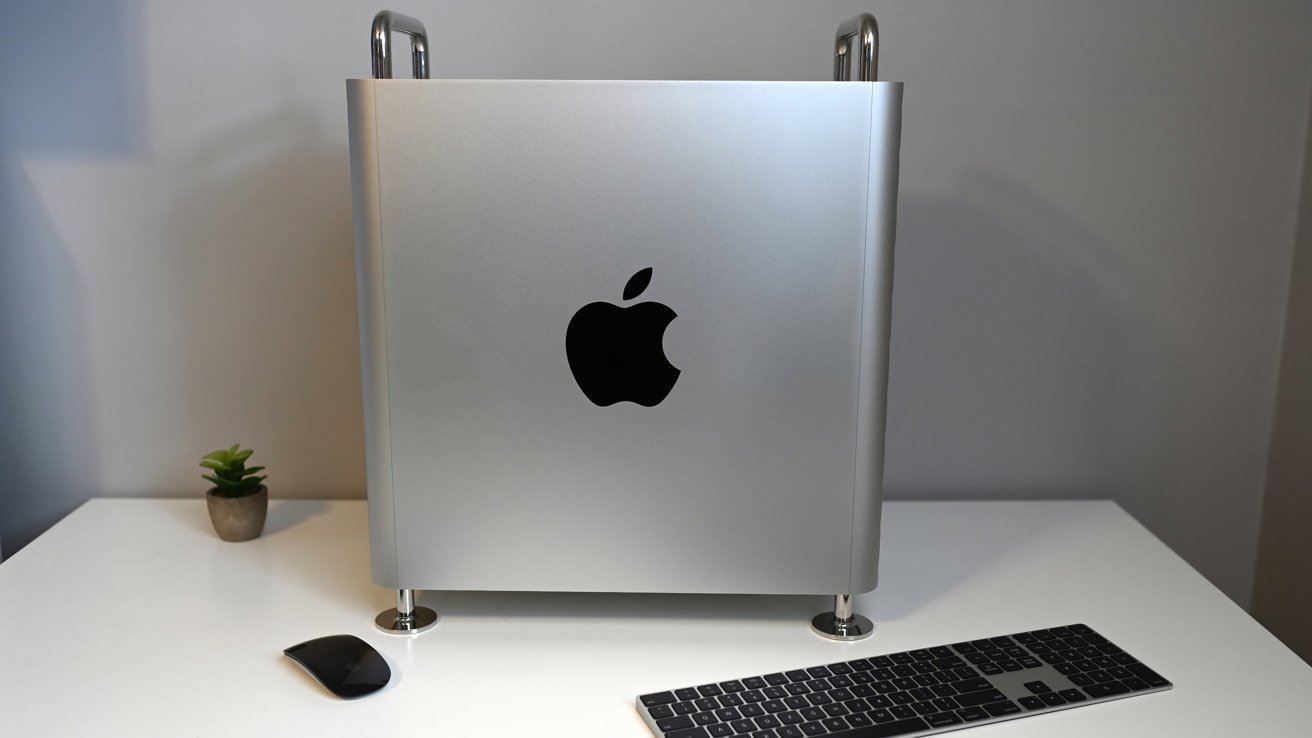
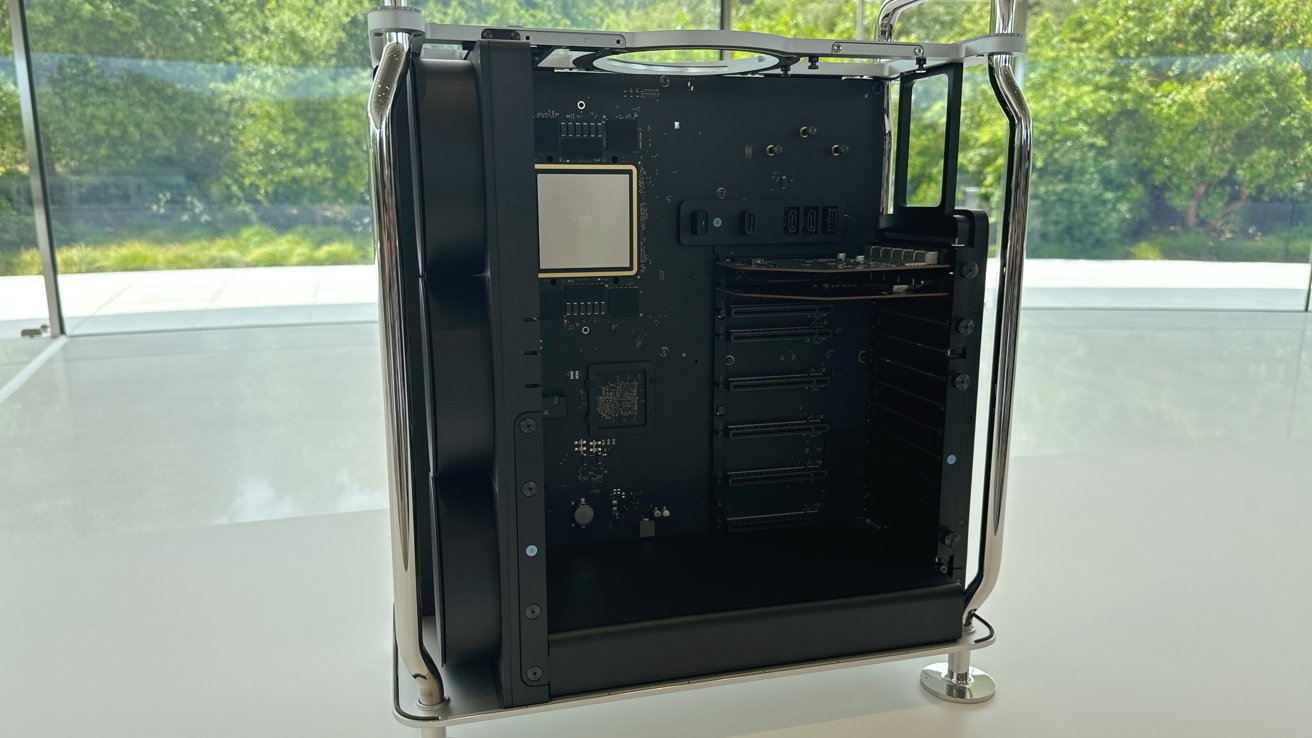
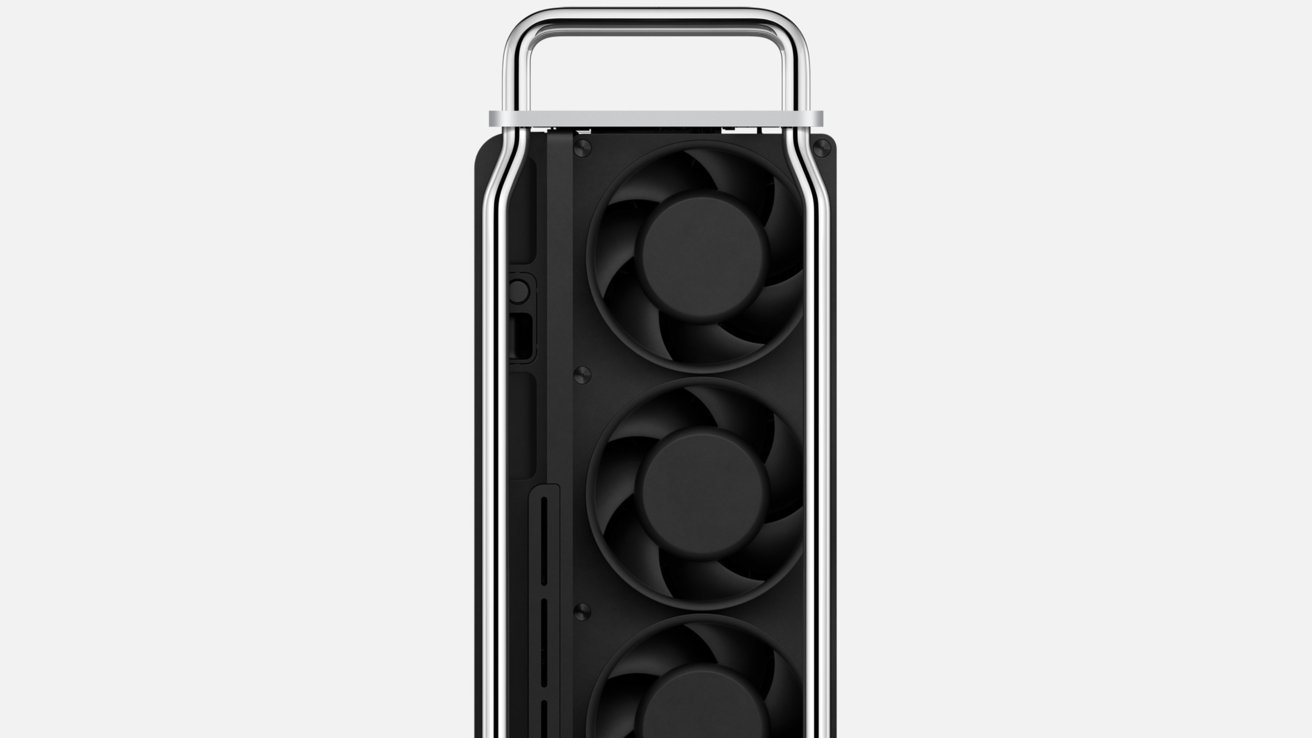
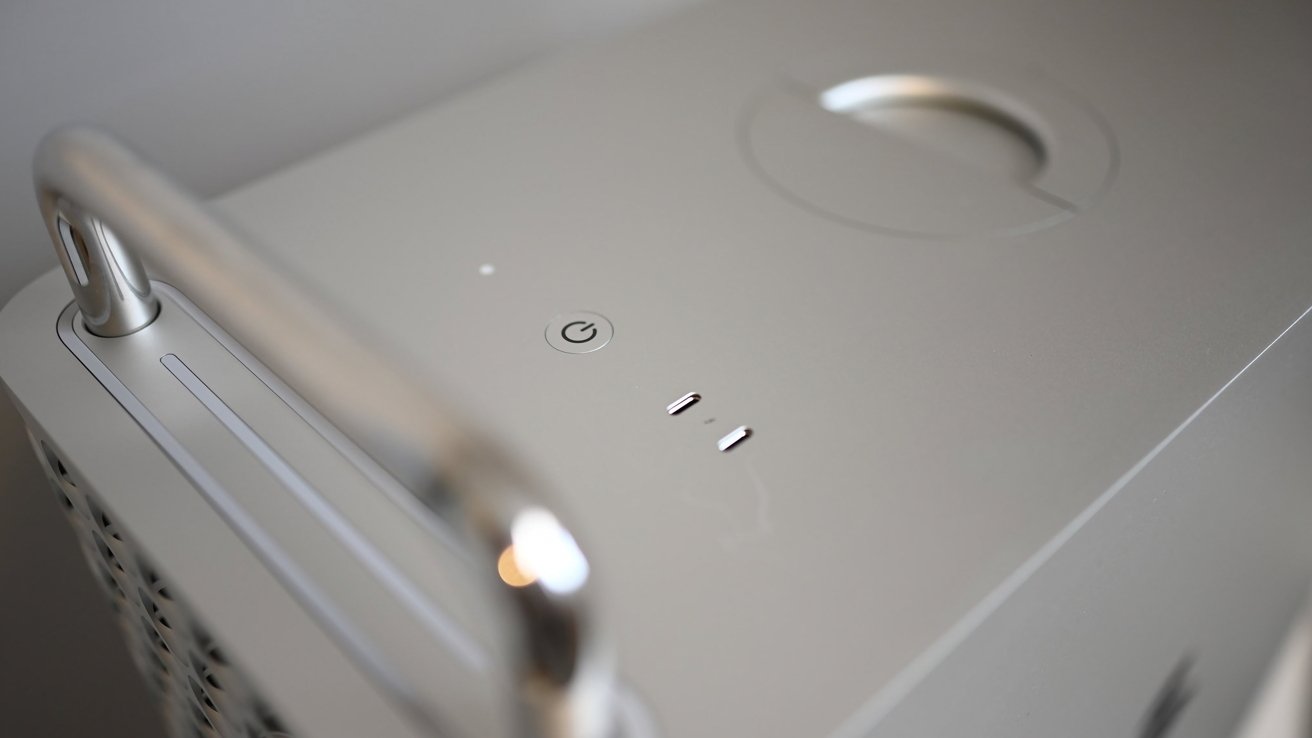
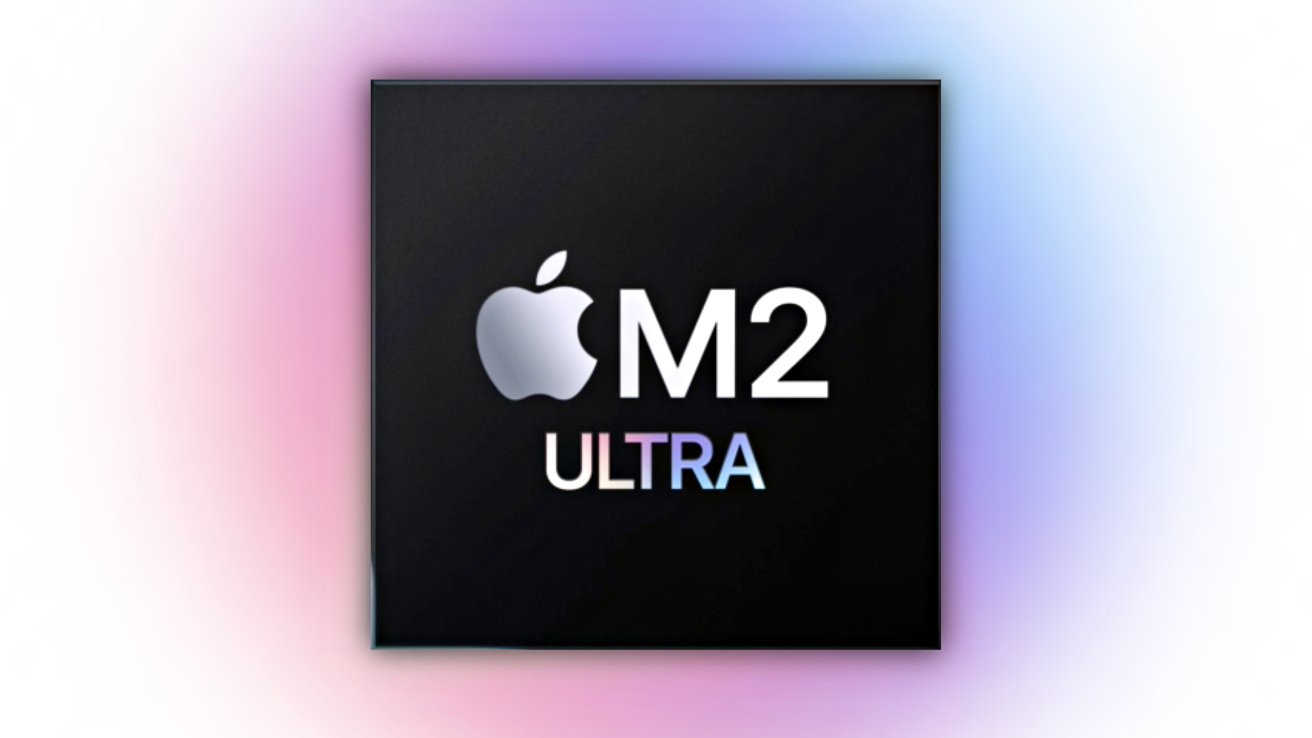
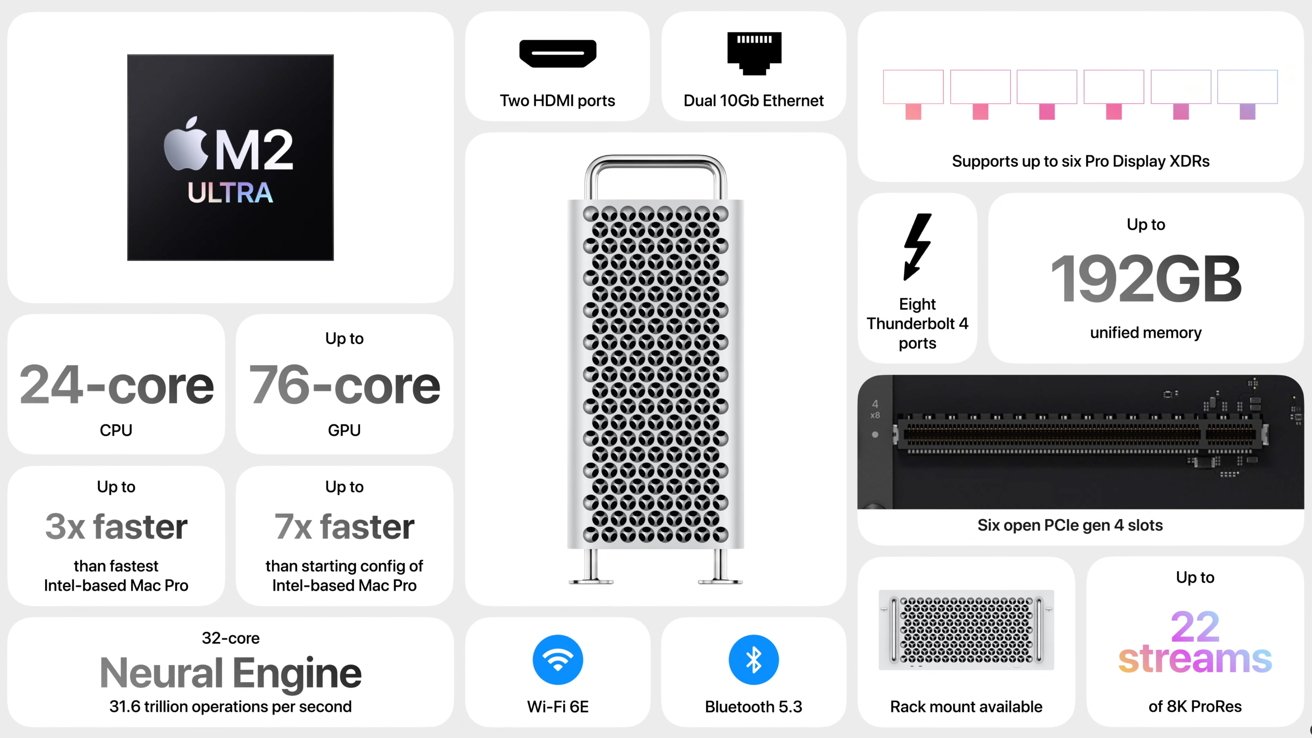
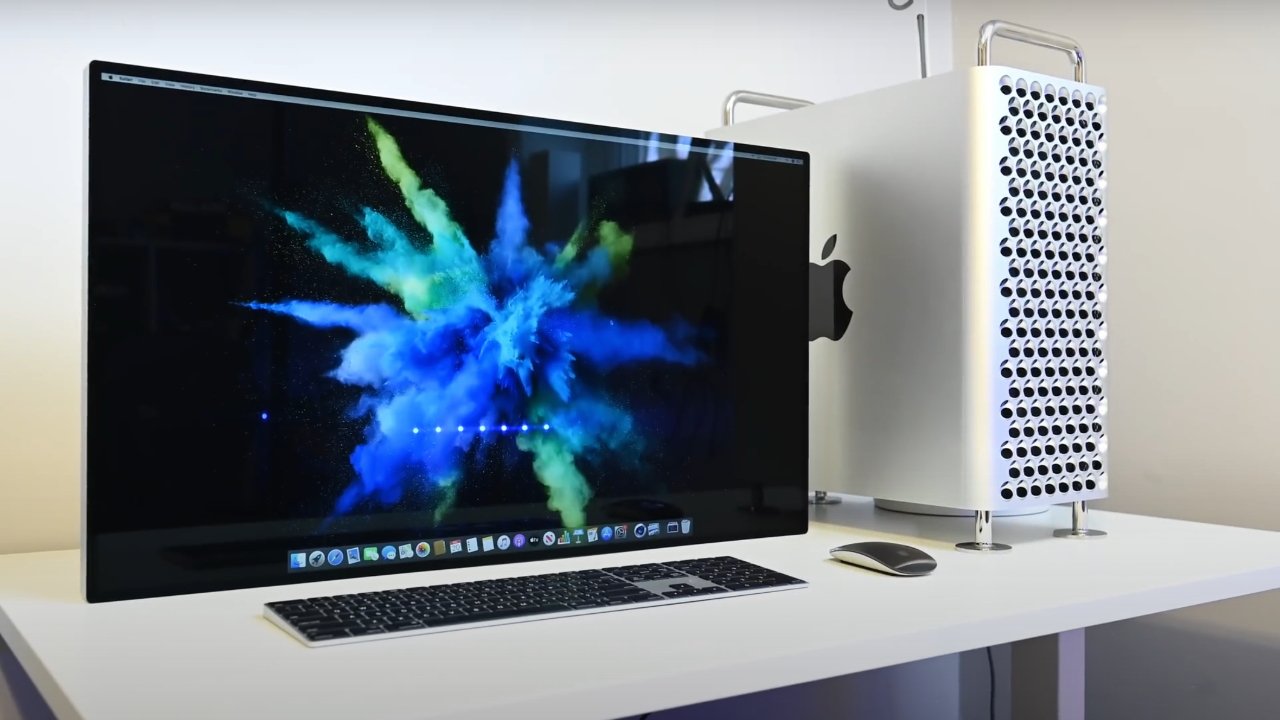

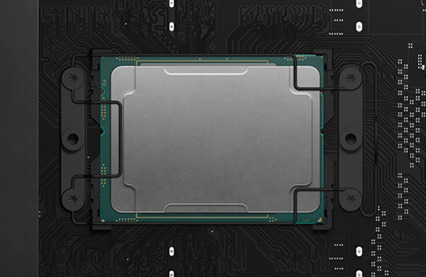
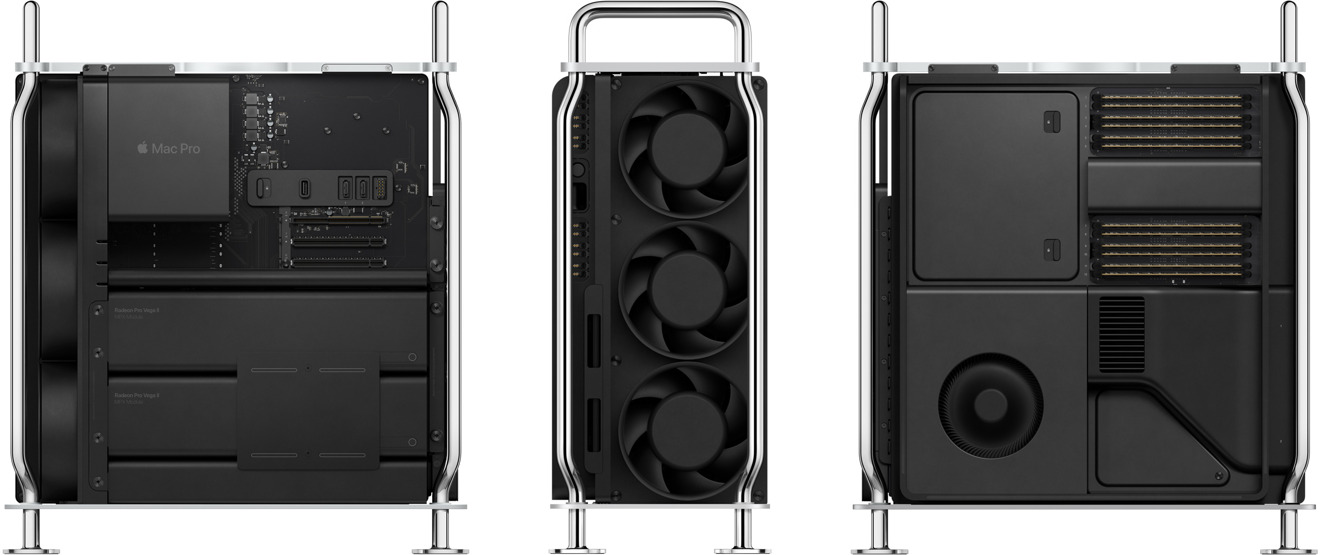
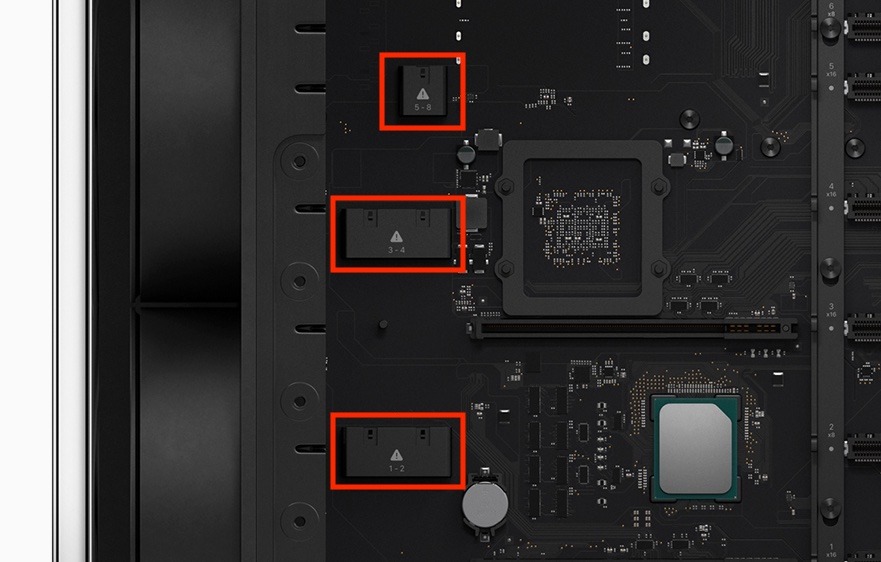
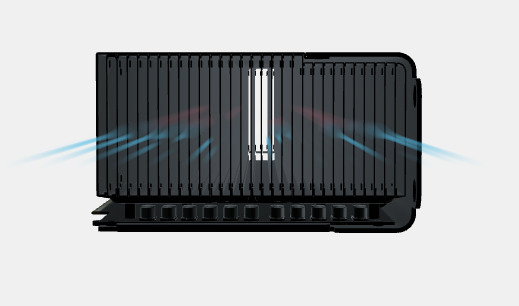
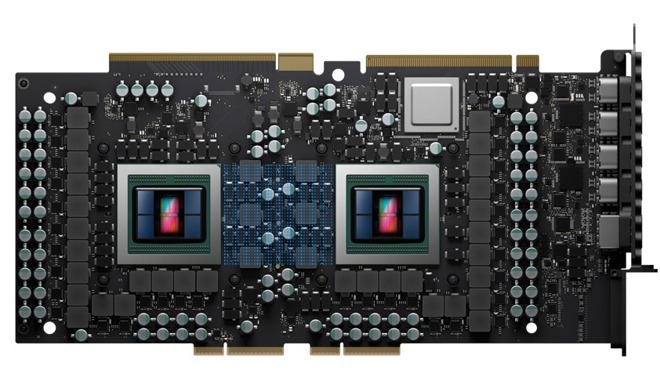
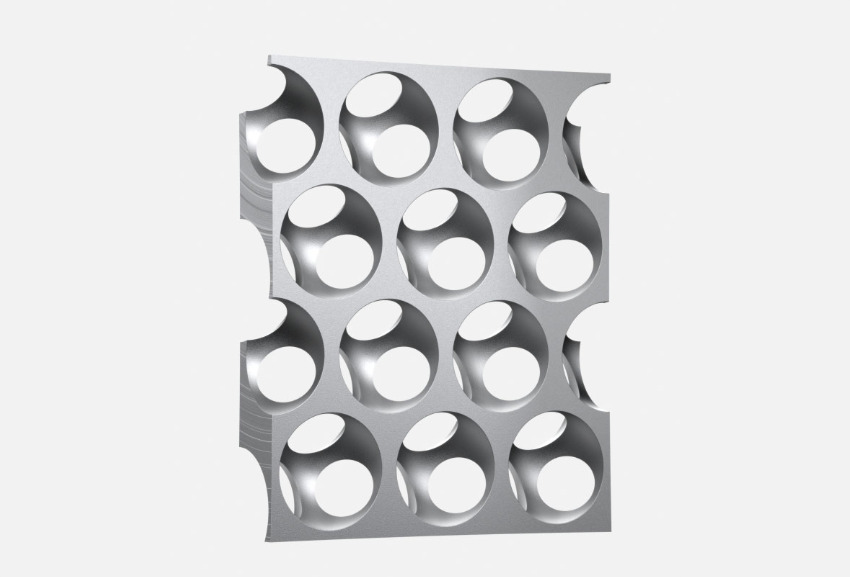
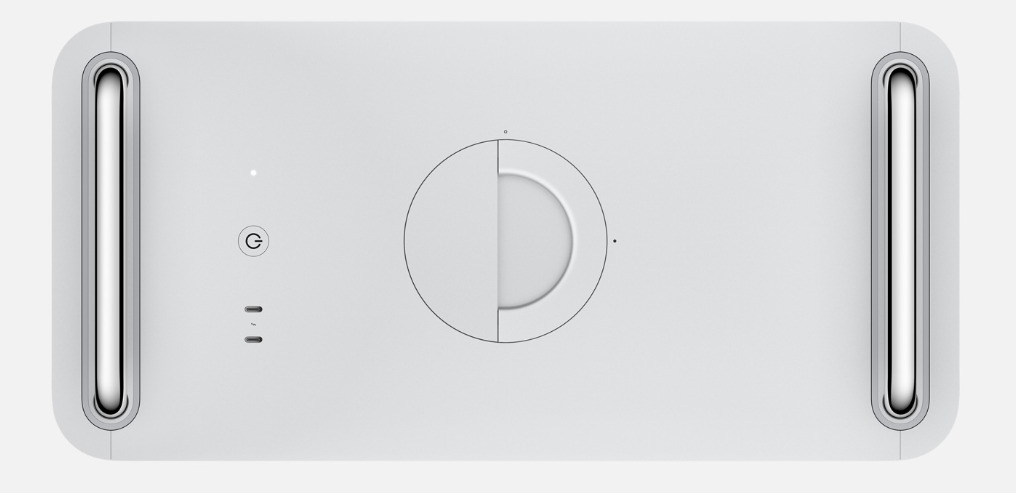
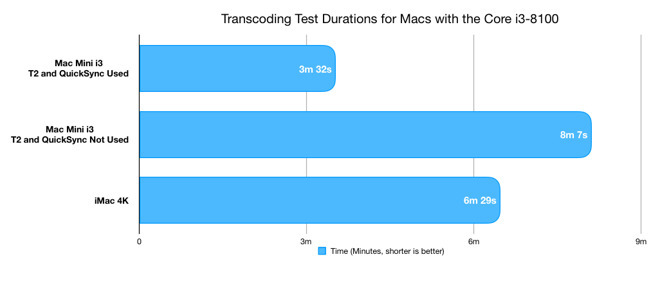
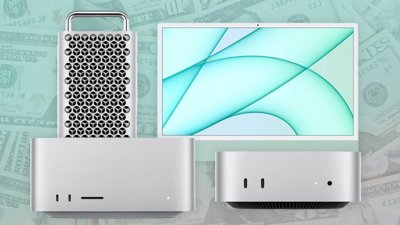
 Malcolm Owen
Malcolm Owen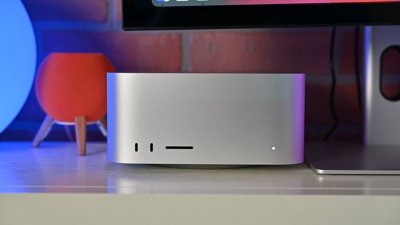
 William Gallagher
William Gallagher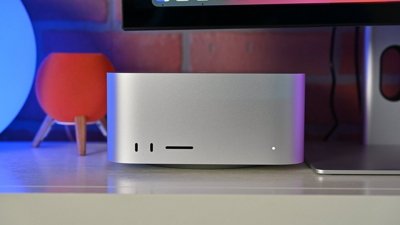

 Mike Wuerthele and Malcolm Owen
Mike Wuerthele and Malcolm Owen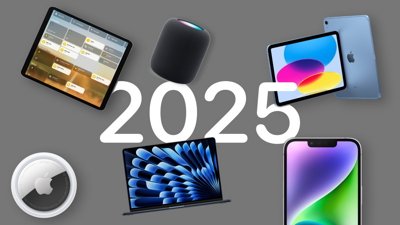
 Wesley Hilliard
Wesley Hilliard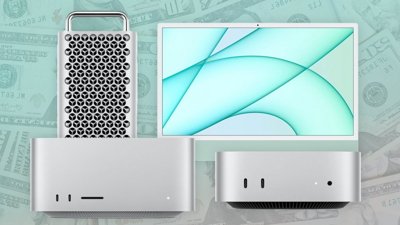


 Charles Martin
Charles Martin